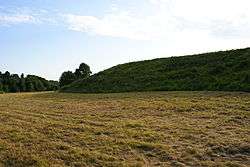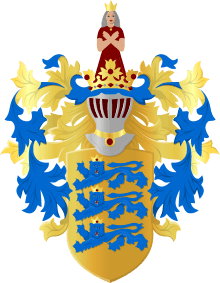Iru, Tallinn
| Iru | |
|---|---|
| Subdistrict of Tallinn | |
|
Iru Hill Fort | |
 Iru within Pirita District. | |
| Country |
|
| County |
|
| City |
|
| District |
|
| Population (01.01.2015[1]) | |
| • Total | 35 |
Iru is a subdistrict (Estonian: asum) in the district of Pirita, Tallinn, the capital of Estonia. It has a population of 35 (As of 1 January 2015).[1]
Iru Hill Fort
On a hill by Pirita River in Iru, the remains of an ancient hill fort are located. The settlement has a history dating back to the third millennium BC. It seems to have been continuously occupied, and strengthened into a more fortress-like castle in the 5th century AD. It remained in use until the 11th century. Archaeological investigations have shown that the settlement was burnt several times. Some of the oldest remains of buildings in Estonia, as well as some of the oldest items made of iron, have been found during excavations.[2]
See also
- Iru village (Jõelähtme Parish)
- Pirita River
- Iru Power Plant
References
- 1 2 "Statistical Yearbook of Tallinn 2015". Tallinn City Government. p. 38. Retrieved 25 October 2015.
- ↑ Viirand, Tiiu (2004). Estonia. Cultural Tourism. Kunst Publishers. p. 44. ISBN 9949407184.
 |
Kloostrimetsa (Botanic Garden) | Laiaküla | Laiaküla, Laiaküla (Viimsi Parish) |
 |
| Kose | |
Laiaküla (Viimsi Parish) | ||
| ||||
| | ||||
| Kose, Priisle | Priisle | Iru (Jõelähtme Parish) |
Coordinates: 59°27′42″N 24°54′04″E / 59.461635°N 24.901049°E
| ||||||||||||||||||||||||||||||||||||

